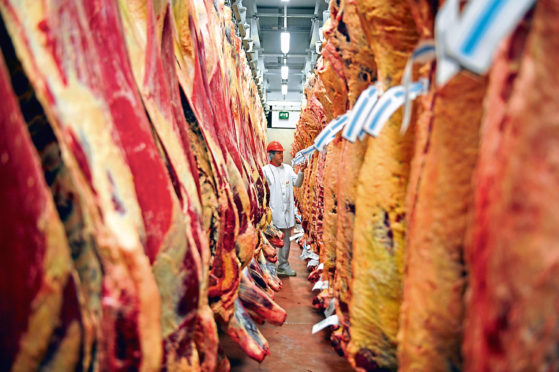The domestic red meat market remains well supplied despite an increase in exports of Scottish beef and lamb.
Analysis by Quality Meat Scotland (QMS) reveals exports of fresh and frozen Scottish beef were up 18% between January and August this year, while sheepmeat exports were up 20% in the same period.
QMS director of economic services, Stuart Ashworth, said increased export sales had been achieved by trading at a lower price – beef and lamb exports only grew in value by 3% and 8% respectively.
“The European market still dominates with 82% of beef and 96% of sheepmeat going to Europe,” said Mr Ashworth.
“However, the average price per tonne of beef sold to Europe was higher than the value sold outside Europe. For sheepmeat, the price per tonne was little different between Europe and the rest of the world.”
He said UK customs data reveals a decline in imports during the same period – beef imports were down 11%, while sheepmeat imports reduced by 18%.
“While the average price per tonne of sheepmeat imported grew 1%, the beef that was imported had an average price 3% lower than in 2018,” added Mr Ashworth.
He said Ireland accounted for the bulk of beef imports at 80%, however imports fell 6% in the past year.
In the sheep market, Mr Ashworth said the main global exporter, New Zealand, had sent 23% less sheepmeat to the UK than it did in 2018.
“Adjusting the volume of beef and sheepmeat produced in UK abattoirs for change in trade patterns suggests 3% less beef and 2% less sheepmeat has been available for use in the UK market so far this year,” said Mr Ashworth.
“While this may suggest that producer prices should have strengthened, the fact that export prices have reduced in an effort to balance the market by a need to increase exports, points towards a very price sensitive and essentially well supplied domestic market.”
